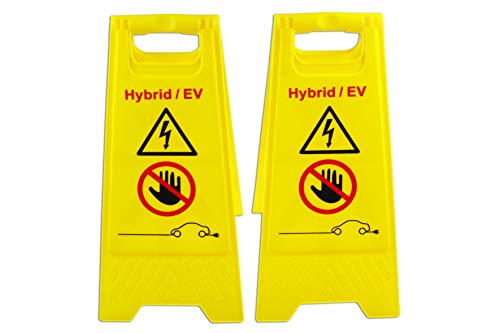- Joined
- Sep 1, 2012
- Messages
- 187
Hi All,
I recently acquired a Mitsubishi i-MiEV, first UK-registered in 2009 and one of the first to arrive here (apparently). It was originally red and white but was wrapped in SSE's green wind turbine logo thing (SSE is a large electricity generator/distributor in the UK). It also has a 'dumb' charging port i.e. no EVSE required, just charges straight from a standard UK 13A socket. VIN number is WEGTPHE4XBXXX01--, maker's plate on F/N/S Door frame shows:
'Model: ZAA HA3W LDD
HA3W - 0000917
Engine: Y4F1 Ext: R4WA'
I bought the car earlier this year for relatively little money and we have another 2 here so, push-come-to-shove I can always use it for spares but I'd really rather like to get it working.
Basically, it won't start. As soon as the ignition is turned on the yellow exclamation mark appears and doesn't go out and the hazard lights come on. Also, no double-ding or 'ready' light when the key is turned to 'start'. The previous keeper (now residing in Australia) says that the errors initially would clear by simply cycling the ignition but eventually he took it to a Mitsu dealer who stated they could not fix it without replacing the battery pack. Hence the low sale price.
An early look with caniOn showed this (taken 09Apr2019):-

... suggesting cells 38 and 42 are dying/aging.
I couldn't get my 2014 eBay-bought MUT3 working at the time as I has lost the CD but today, I finally managed to source some working sofware and got my MUT3 working. I see that cell 38's voltage is now 2.1V.
I offer the following screenshots of an amateur's initial use of it in the hope that they will be useful in determining a positive course of action:-


These 3 EV-ECU errors would not clear...








All other errors cleared OK...
So, Q's...
1/ Is there a way of using the MUT3 to overide the non-clearable errors to get the car into a 'Ready' state to see if it basically works ie goes forwards and backwards etc?
2/ Is there a way of using the MUT3 to overide the errors to get the car to charge?
3/ From this, does it appear that I'll need to replace cells 38 and maybe 42 to stop the errors from coming up and preventing he car from working/charging?
4/ What else can I check to confirm I need to replace the aforementioned cells and/or fix anything else?
Any help gratefully received.
I recently acquired a Mitsubishi i-MiEV, first UK-registered in 2009 and one of the first to arrive here (apparently). It was originally red and white but was wrapped in SSE's green wind turbine logo thing (SSE is a large electricity generator/distributor in the UK). It also has a 'dumb' charging port i.e. no EVSE required, just charges straight from a standard UK 13A socket. VIN number is WEGTPHE4XBXXX01--, maker's plate on F/N/S Door frame shows:
'Model: ZAA HA3W LDD
HA3W - 0000917
Engine: Y4F1 Ext: R4WA'
I bought the car earlier this year for relatively little money and we have another 2 here so, push-come-to-shove I can always use it for spares but I'd really rather like to get it working.
Basically, it won't start. As soon as the ignition is turned on the yellow exclamation mark appears and doesn't go out and the hazard lights come on. Also, no double-ding or 'ready' light when the key is turned to 'start'. The previous keeper (now residing in Australia) says that the errors initially would clear by simply cycling the ignition but eventually he took it to a Mitsu dealer who stated they could not fix it without replacing the battery pack. Hence the low sale price.
An early look with caniOn showed this (taken 09Apr2019):-

... suggesting cells 38 and 42 are dying/aging.
I couldn't get my 2014 eBay-bought MUT3 working at the time as I has lost the CD but today, I finally managed to source some working sofware and got my MUT3 working. I see that cell 38's voltage is now 2.1V.
I offer the following screenshots of an amateur's initial use of it in the hope that they will be useful in determining a positive course of action:-


These 3 EV-ECU errors would not clear...








All other errors cleared OK...
So, Q's...
1/ Is there a way of using the MUT3 to overide the non-clearable errors to get the car into a 'Ready' state to see if it basically works ie goes forwards and backwards etc?
2/ Is there a way of using the MUT3 to overide the errors to get the car to charge?
3/ From this, does it appear that I'll need to replace cells 38 and maybe 42 to stop the errors from coming up and preventing he car from working/charging?
4/ What else can I check to confirm I need to replace the aforementioned cells and/or fix anything else?
Any help gratefully received.

































